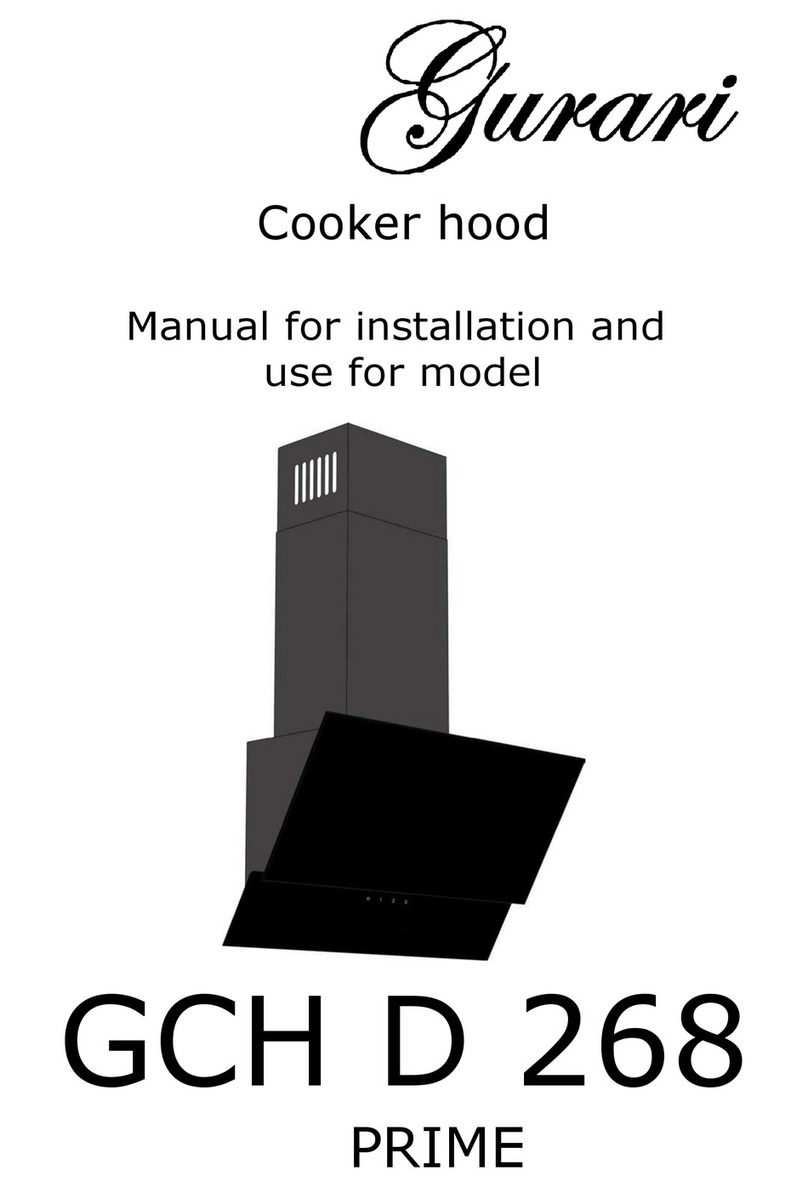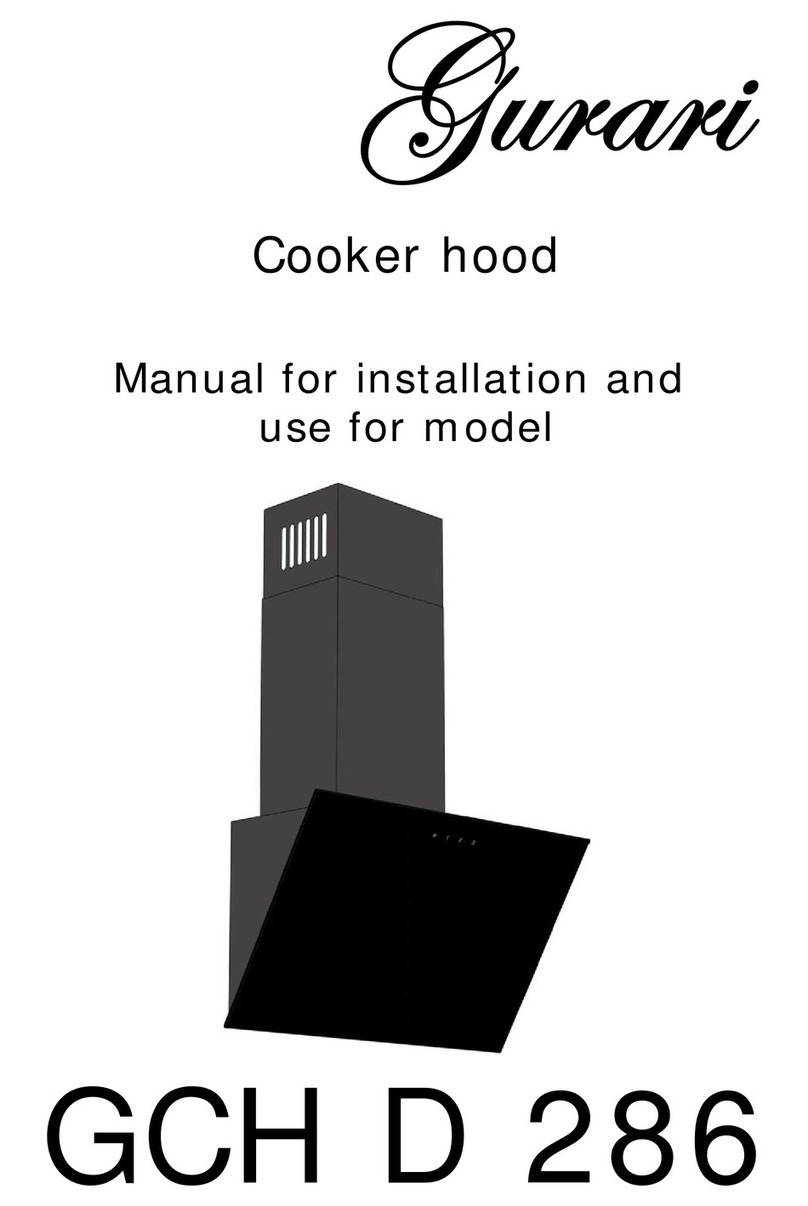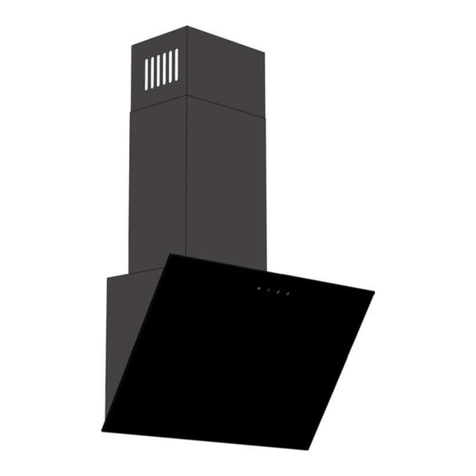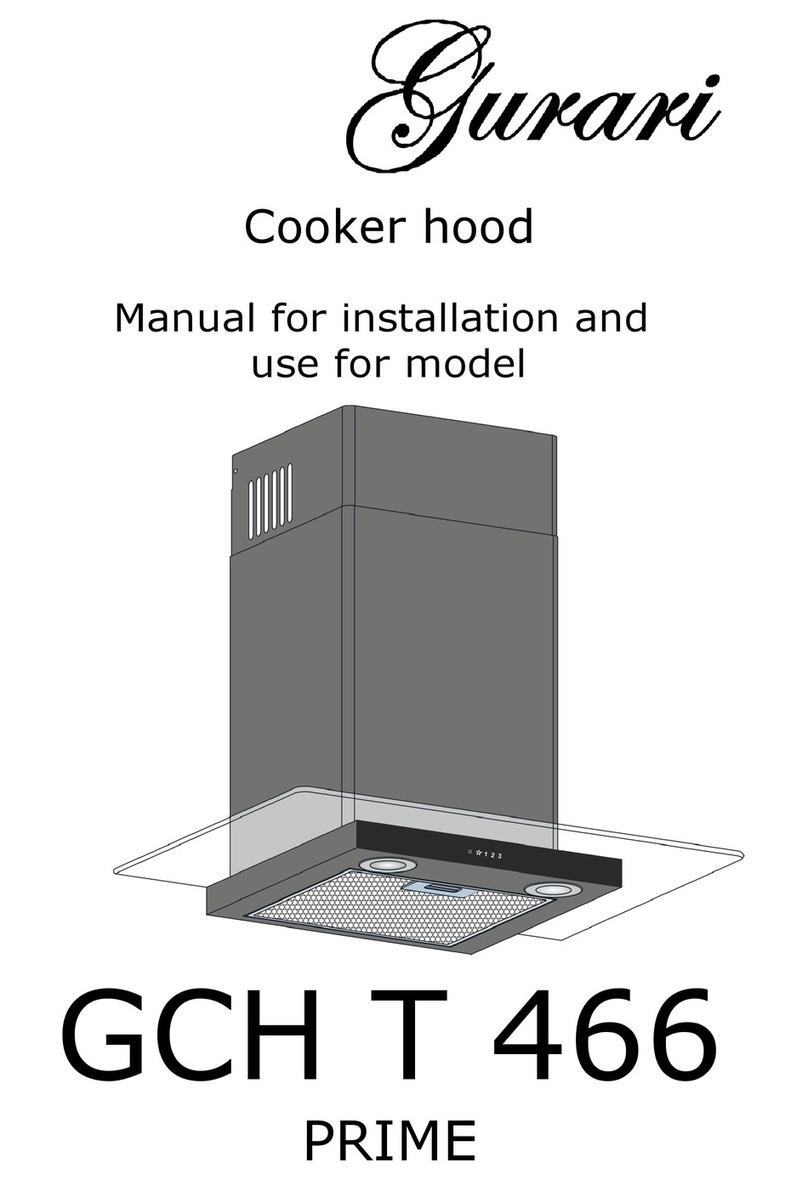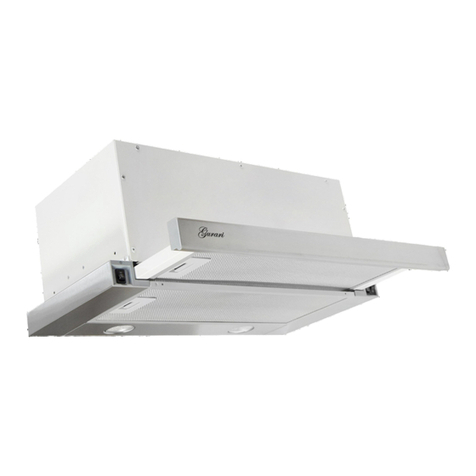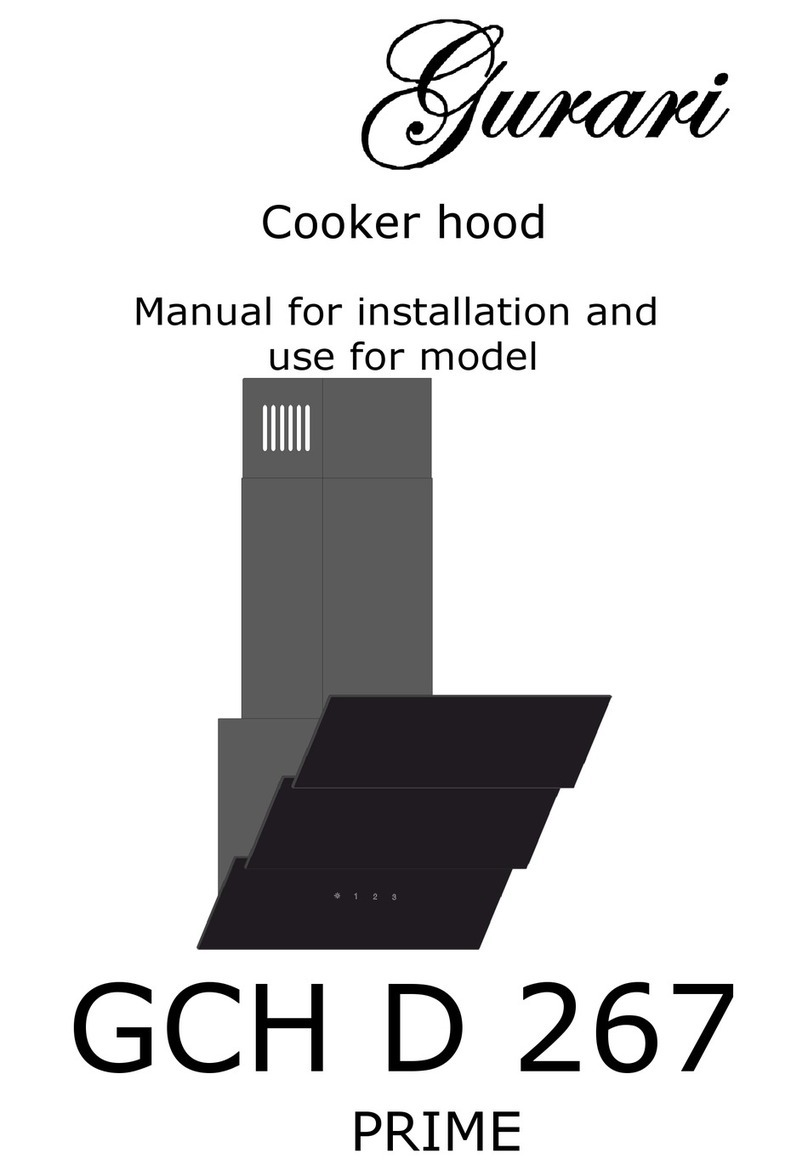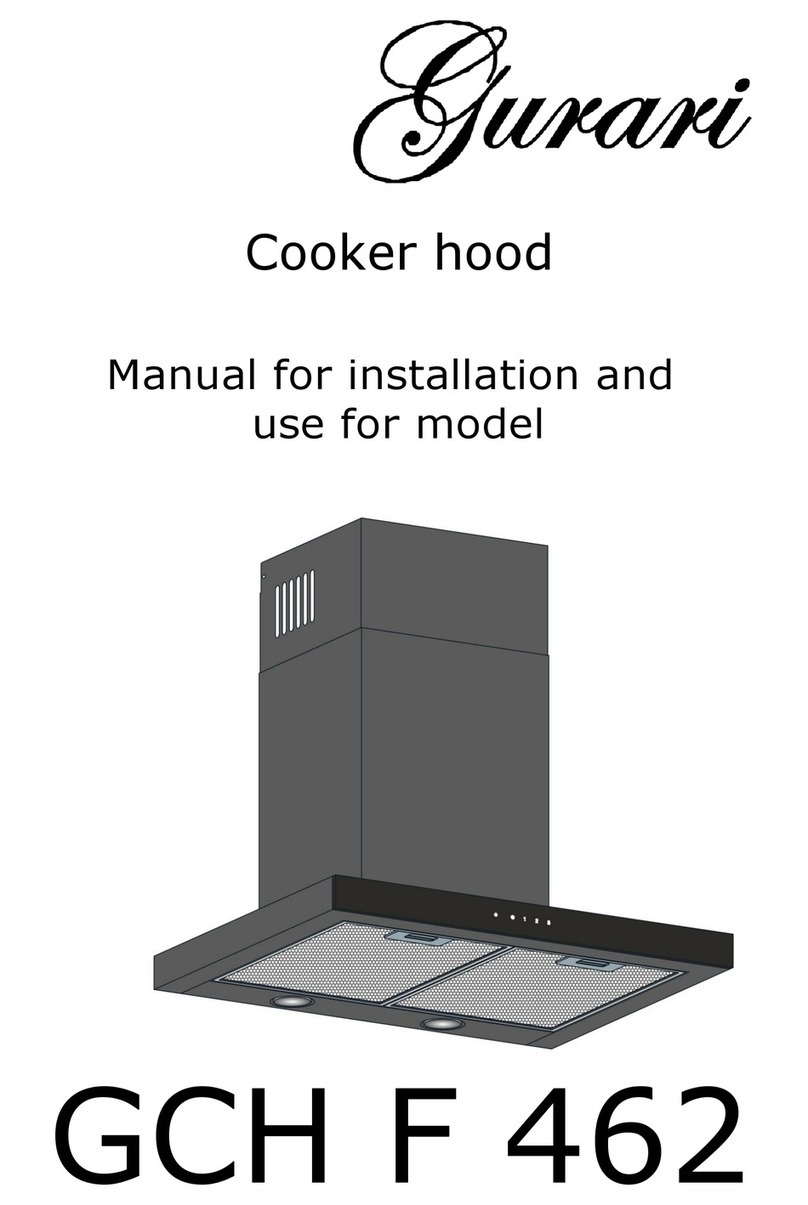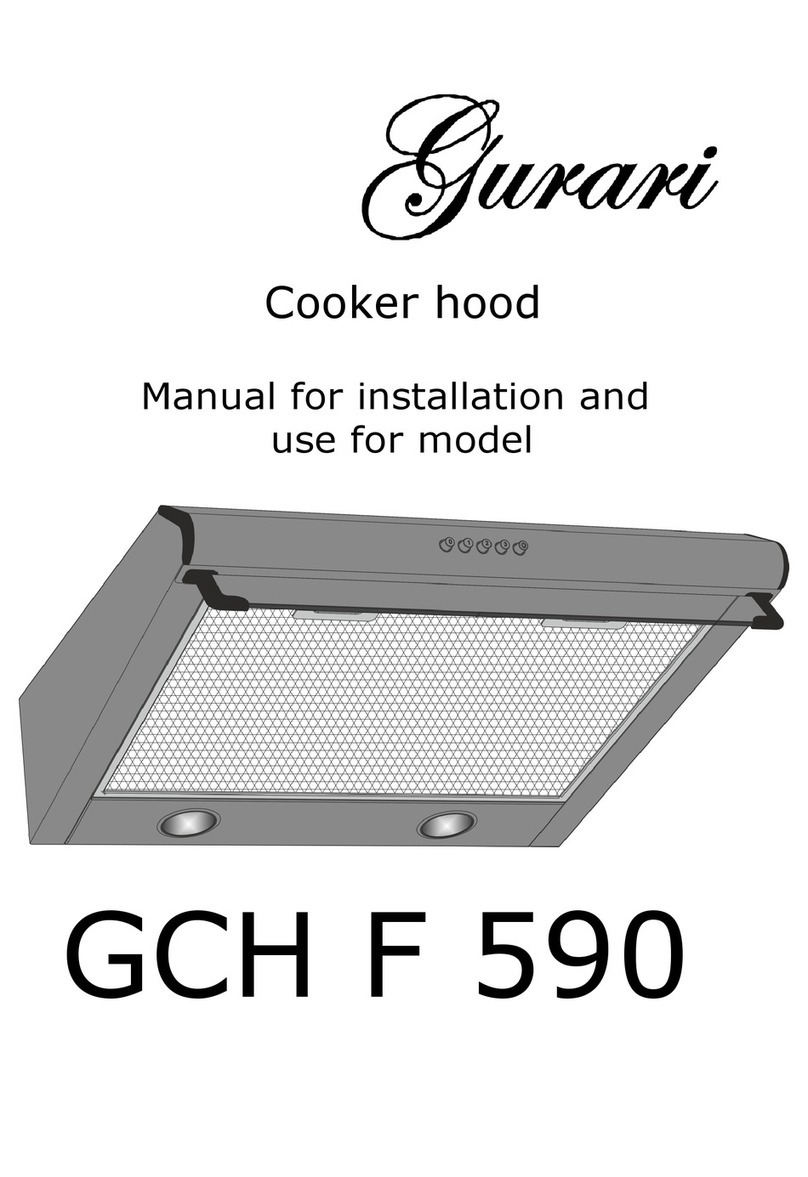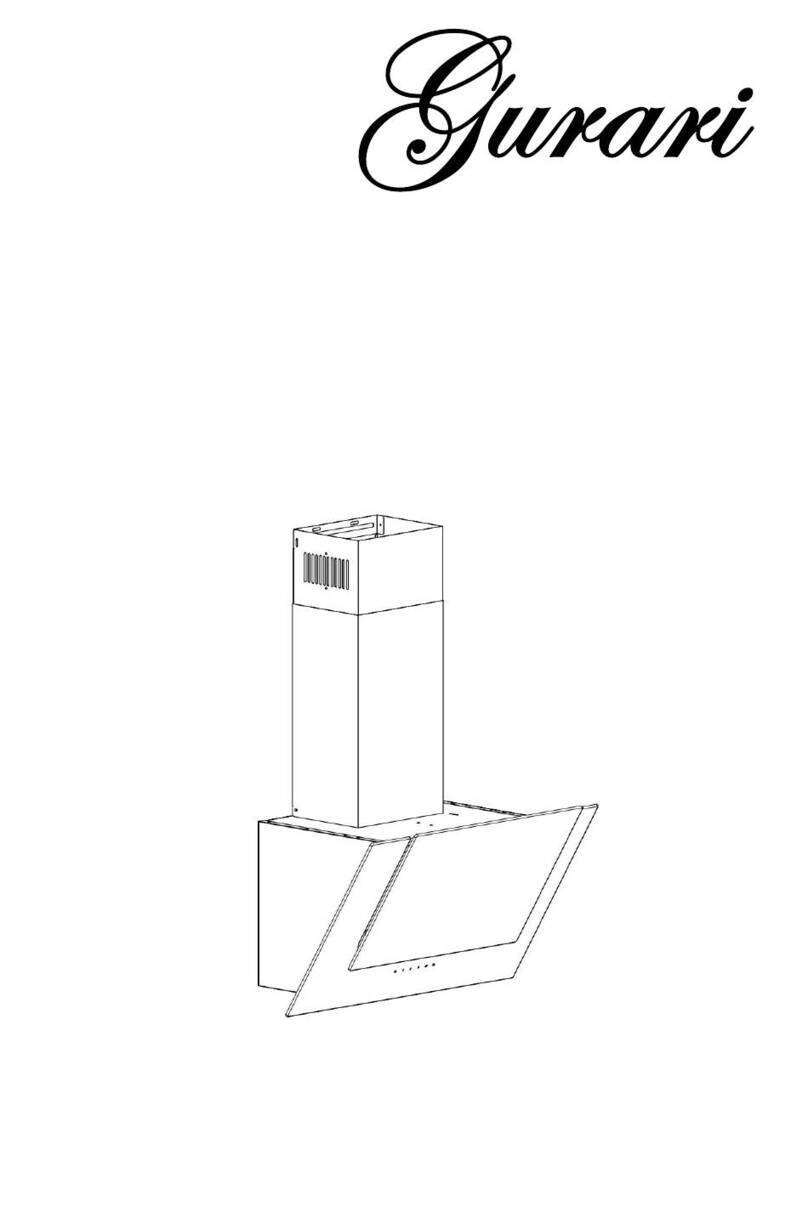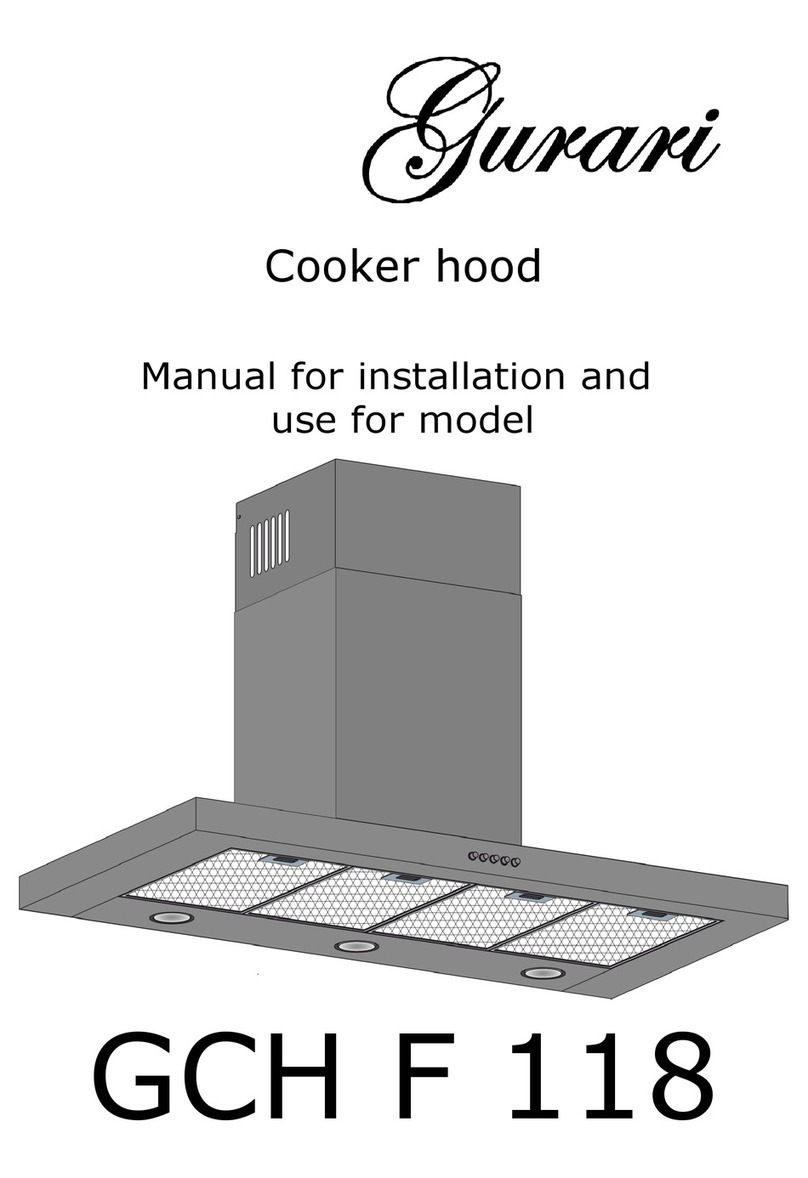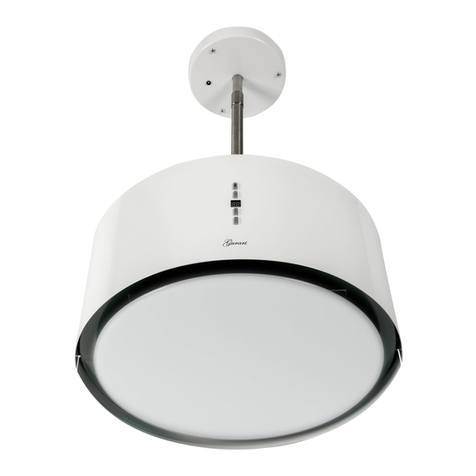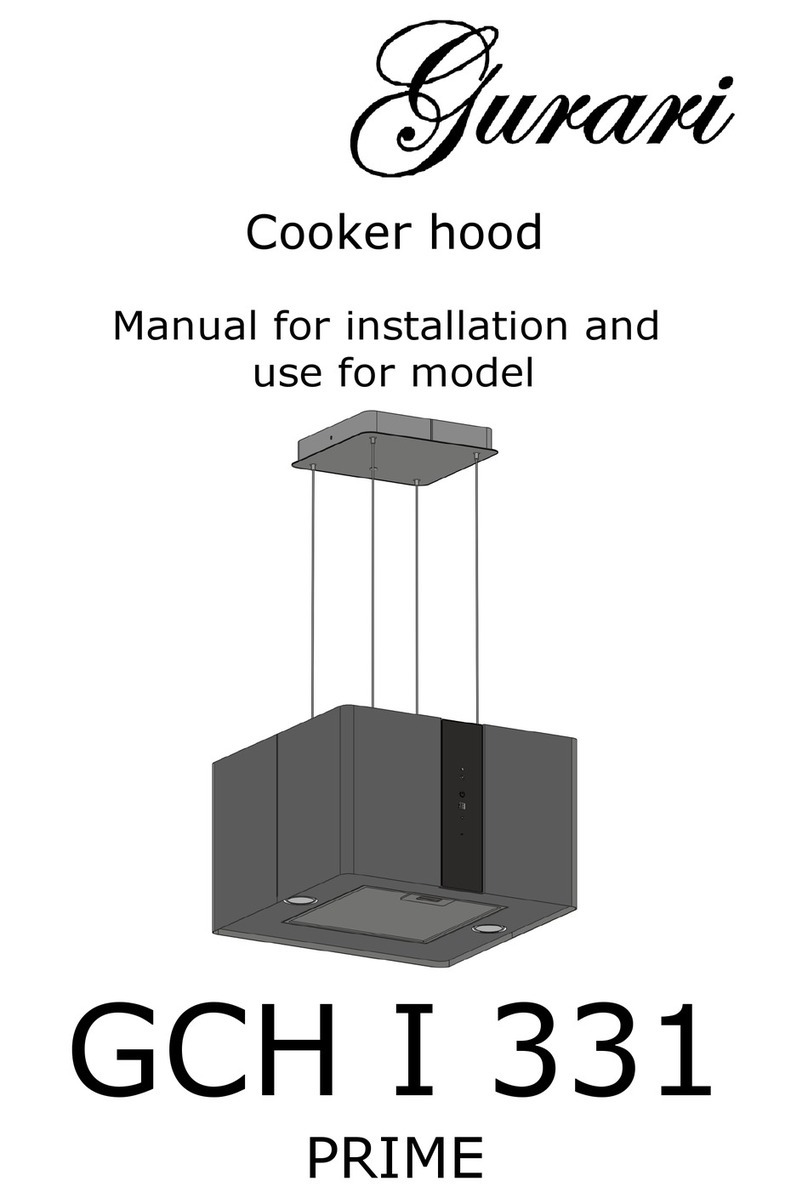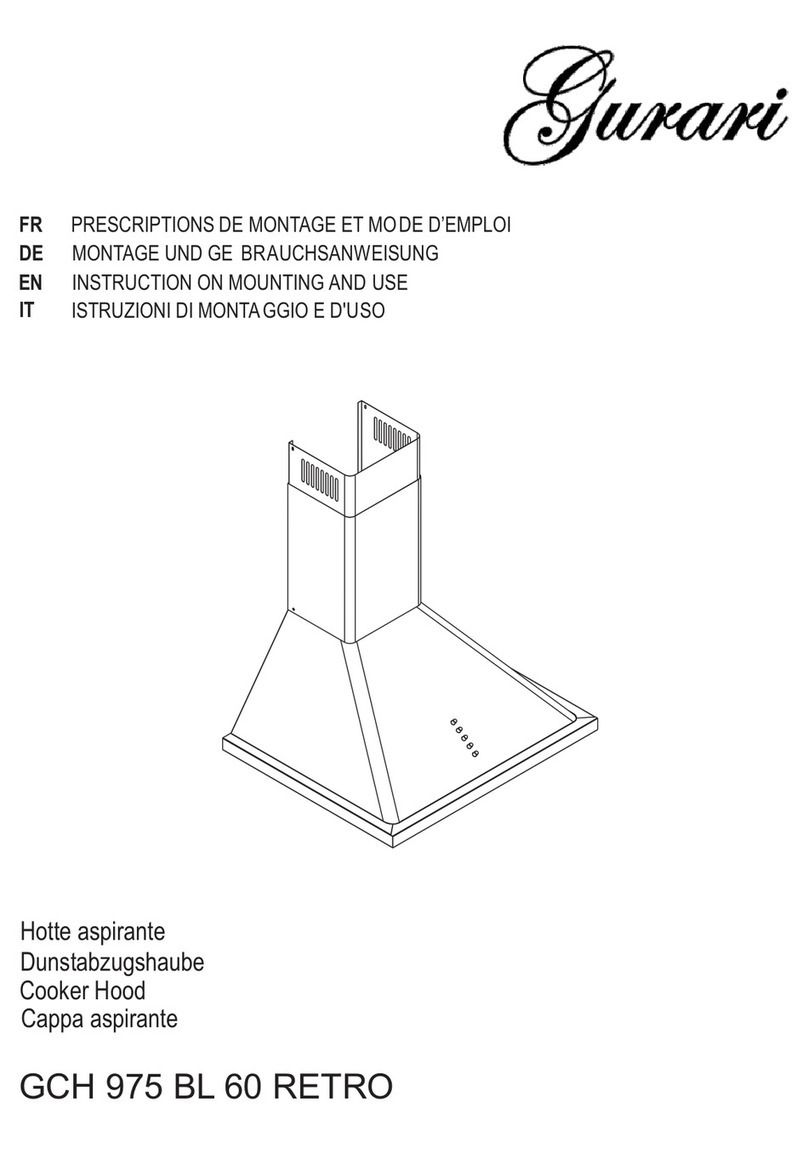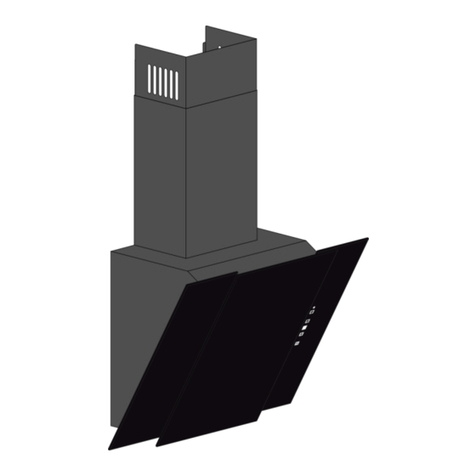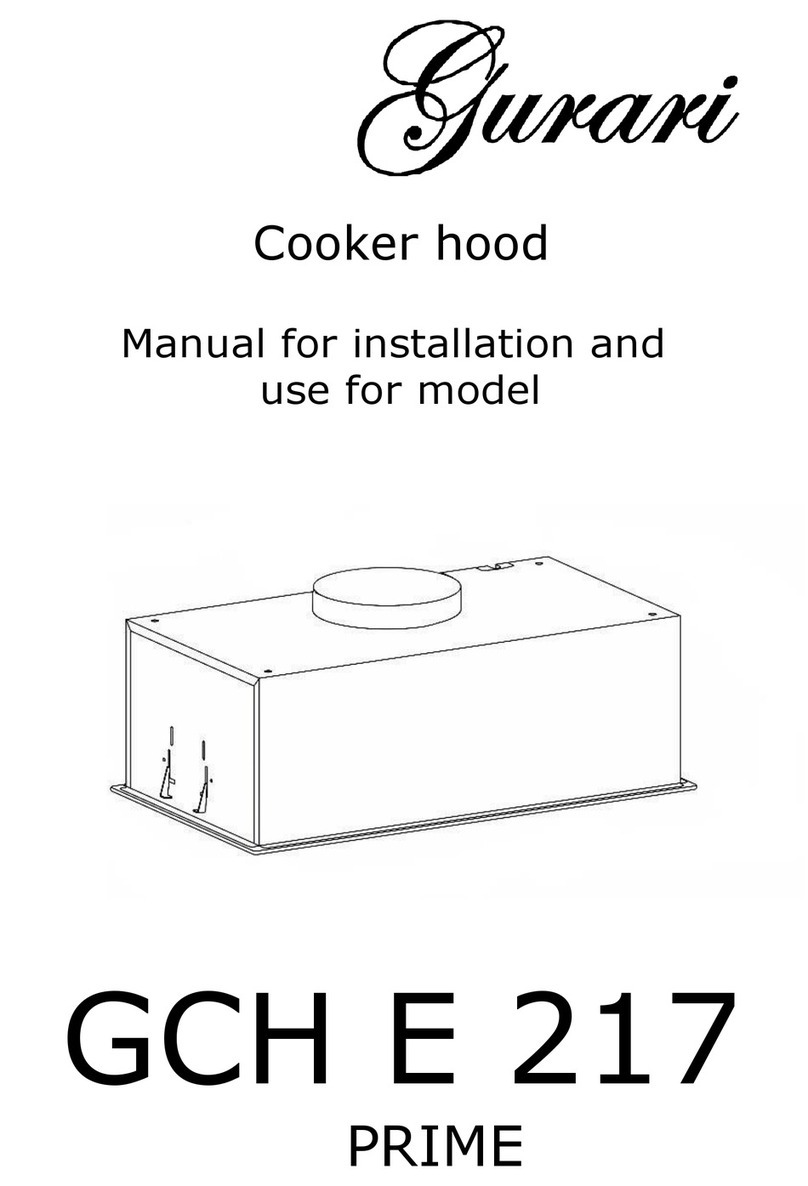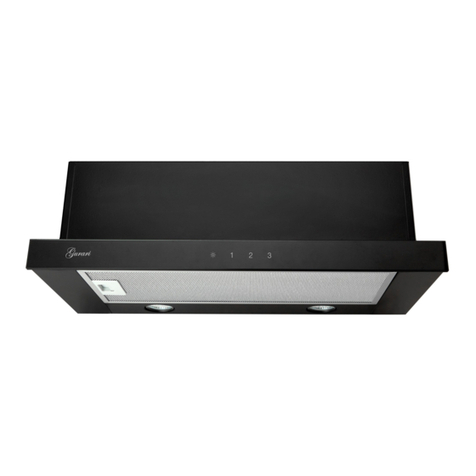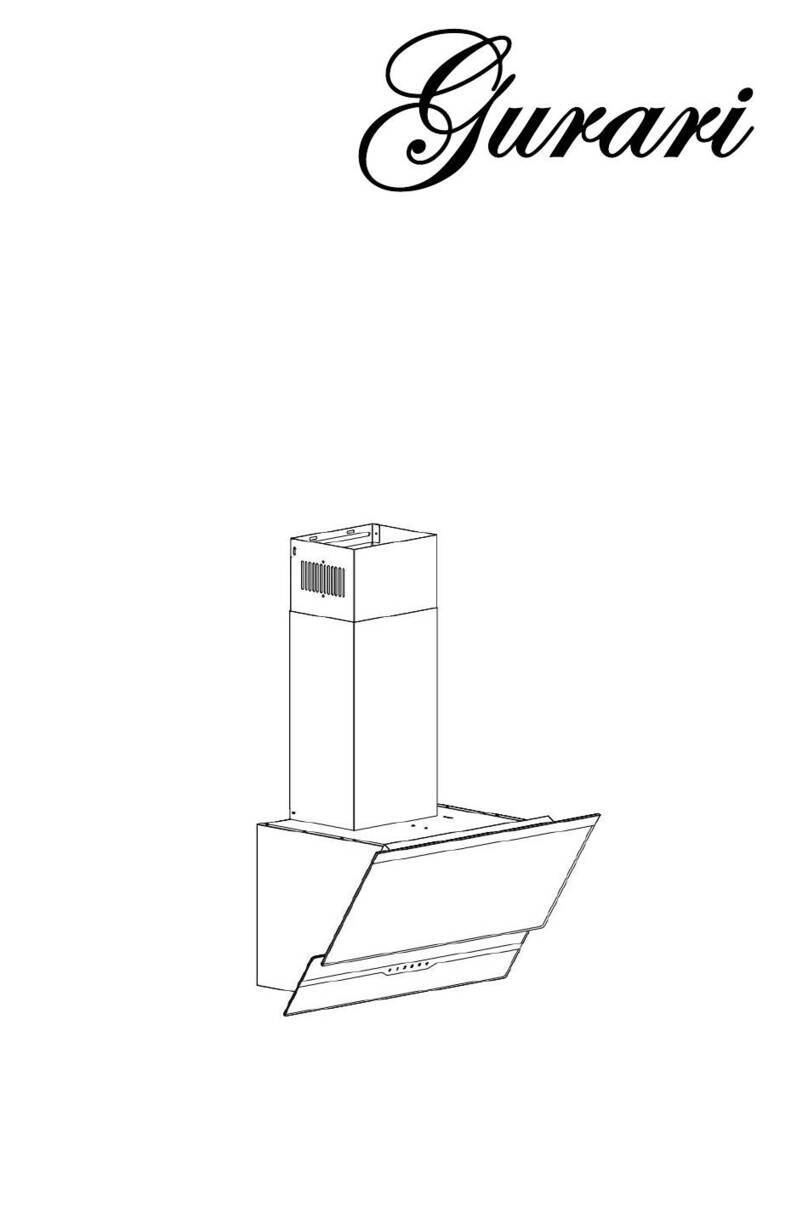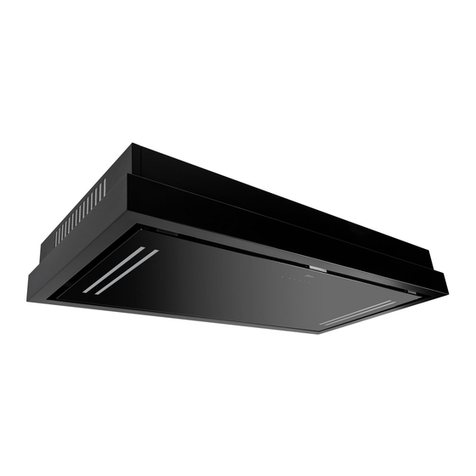1.
examination
Before starting the actual installation, the device should be checked. In addition to the control of
externally recognizable damage, a function check has to be done. Take out the device from the
packing, get rid of all packing materials and put the device with the back on the floor / table. After
connecting to a power supply, the lighting as well as the function of each stage should be checked.
Please take care that exhaust outlet is open through check.
2.
Installation of the hood
Loosen the three screws that connect the top of the chimney to the ceiling bracket and lower the top of
the chimney. (Fig. 1). Unscrew the 3 screws on each of the brackets, and remove the chimney ceiling
bracket. (Fig. 2). If it is necessary to increase the height of the hood, unscrew 2 screws on each of the
brackets, and moving it to the side, remove it from the grooves of the hood (Fig. 3). Adjust the height
of the brackets (Fig. 4). Install the brackets in the hood grooves, and moving them to the side, tighten
2 screws on each of the brackets (Fig. 5). Attach the ceiling bracket to the ceiling. To do this, mark the
holes for drilling, drill them, insert the dowels, and then firmly fasten the bracket to the ceiling. It is
recommended to use M10 screws with a minimum length of 60 mm and appropriate dowels. If you have
a suspended ceiling, longer screws may be needed to secure them to the concrete / stone ceiling. If you
need a screw connection in wood - use the appropriate screws and make sure that they are fixed in
solid wooden beams. The ceiling mount must have a load capacity of at least 50 kg. All screw
connections must be securely fastened to the ceiling. (Fig. 6). It is also important that the ceiling
bracket should be placed completely horizontally on the ceiling. Inequalities need to be leveled in
advance. If the power supply is outside the hood circuit (e.g. ceiling socket), it is advisable to cut the
ceiling slightly at the appropriate point before mounting the ceiling bracket and insert the hood power
cable between the ceiling and the mounting bracket. Alternatively, in this case, the upper part of the
chimney can also be milled at the upper edge in order to run the cable. If the power supply is located
directly on the ceiling above the place of attachment of the hood, there is a possibility of direct
connection to the power supply. This should be done by a qualified electrician who ensures that the
power supply is properly protected. In the air outlet mode, the hood must be connected to the air duct.
(Fig. 7). Depending on the size of the exhaust pipe, the supplied reducer should be used in advance. If
possible, the exhaust air should be discharged through a 150 mm pipe. The use of a diameter less than
125 mm is unsuitable. Note that reducing to 125 mm can already lead to reduced performance. This
step can be ignored when used in recirculation mode.
Install the hood by installing the hooks on the mounting brackets in the corresponding grooves on the
mounting bracket. If it is necessary, connect the air duct in advance. Make sure that the exhaust ducts
are straight and tight. (Fig. 8) If you have installed a ceiling bracket directly under the power supply,
connect the hood before mounting it. To connect the hood, please consult a qualified electrician and
make sure that the power supply is de-energized during installation. After attaching the hood to the
ceiling, move the top of the chimney up and infix the chimney with screws. (Fig. 9) Then turn on the
power supply or connect the power cord to the outlet. The hood is ready for use.

